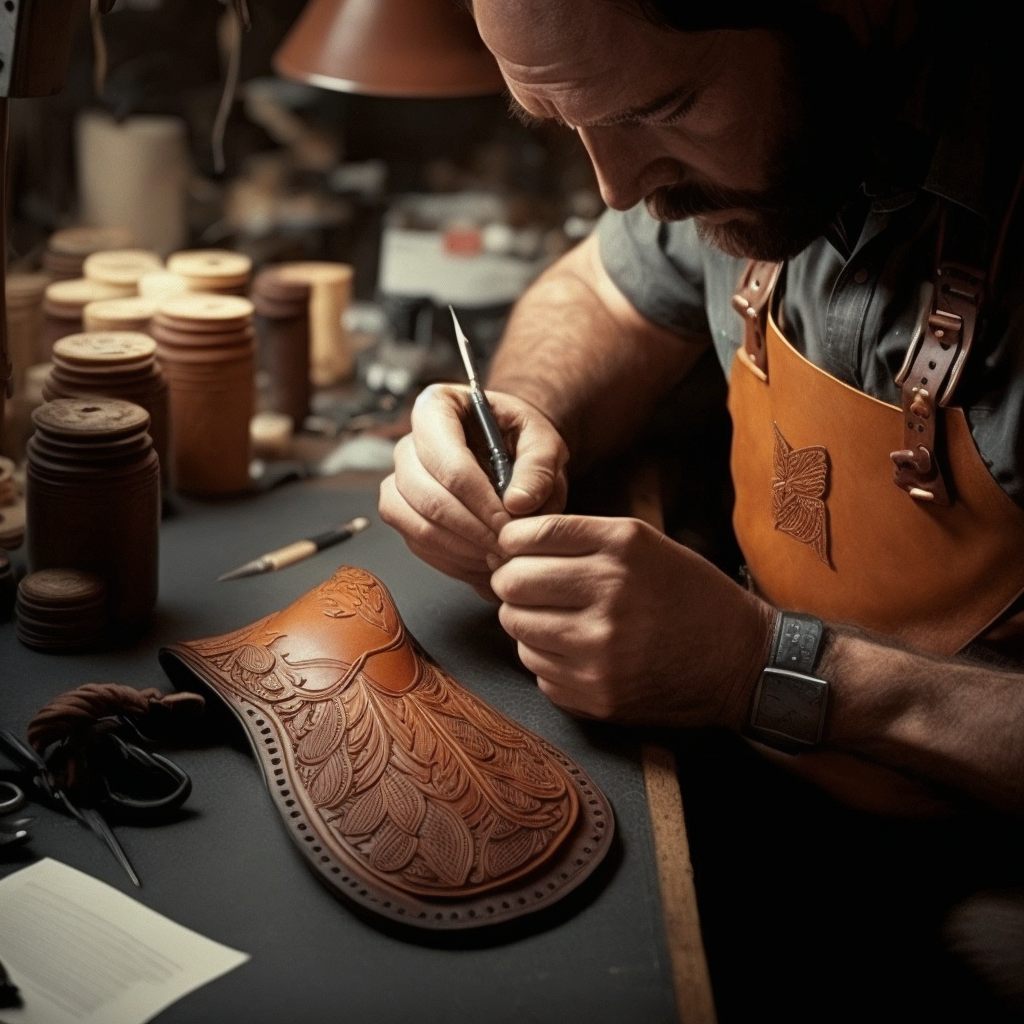Introduction
Leatherworking is an ancient art that has evolved over the centuries, with various techniques and tools being used to create intricate patterns and designs. One such technique is leather stamping, which involves embossing or pressing a design into the leather to create a raised or depressed pattern. Before the advent of brass stamps, leather craftsmen relied on hand engraving using inox tools to create beautiful works of art. This blog post will take you through the history of leather stamping, from hand engraving with inox tools to the introduction of brass stamps.
The Early Days of Leather Stamping
The history of leather stamping dates back thousands of years, with evidence of the technique being used in ancient cultures around the world. Skilled artisans would hand engrave designs into the leather using a variety of carving tools made from materials such as bone, wood, and metal. Among these early tools were inox (stainless steel) tools, which offered durability and resistance to corrosion.
Inox carving tools (link) were widely used due to their long-lasting sharpness and ability to create precise, intricate patterns. These tools came in various shapes and sizes, each designed to serve a specific purpose. For example, bevelers were used to create a smooth transition between the stamped design and the leather surface, while swivel knives were used for cutting and outlining designs.
Hand Engraving in Action: A Video Demonstration
For a visual representation of the art of hand engraving, check out this video by Springfield Leather (Link: [https://www.youtube.com/watch?v=hkcbnXQwPt4&ab_channel=SpringfieldLeather]). The video demonstrates the use of various carving tools and techniques, offering a glimpse into the skill and craftsmanship required for hand engraving.
The Introduction of Brass Stamps
As the leatherworking industry progressed, new tools and techniques were developed to make the stamping process more efficient and accessible. One such innovation was the introduction of brass stamps. These stamps offered a more standardized and consistent way to create designs on leather, as they could be mass-produced and used by multiple craftsmen.
Brass stamps are made by casting a design in brass, which is then heated and pressed into the leather to create a raised or depressed pattern. This process is much faster than hand engraving and requires less skill, making it more accessible to beginners and hobbyists.
While brass stamps have become the industry standard for many leatherworkers, hand engraving with inox tools remains a highly respected and sought-after skill. Many collectors and enthusiasts appreciate the unique, one-of-a-kind designs that can only be achieved through the time-honored art of hand engraving.
Conclusion
The history of leather stamping is a fascinating journey from ancient cultures to modern-day techniques. While the introduction of brass stamps has made the process more efficient and accessible, the art of hand engraving with inox tools continues to hold a special place in the hearts of many leatherworkers and enthusiasts. The craftsmanship, skill, and attention to detail required for hand engraving are truly a testament to the passion and dedication of those who have chosen to carry on this ancient tradition.
